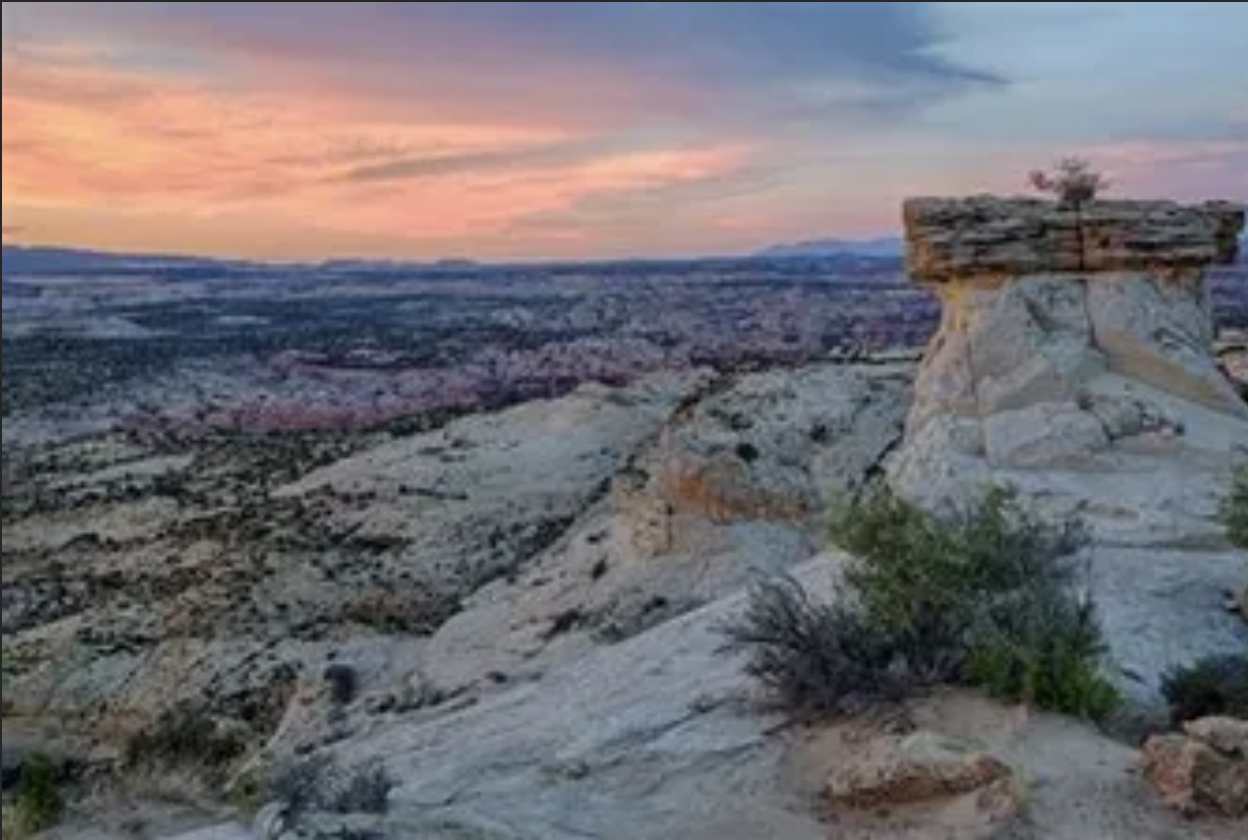Counties Initiate Coordination on Monument Plan
On October 8, 2021, President Biden issued two Presidential Proclamations reinstating the vast boundaries of Bears Ears and Grand Staircase-Escalante national monuments.
Originally, the Grand Staircase-Escalante National Monument was created by Bill Clinton on September 18, 1996, and 20 years later in the final days of his presidency, the Bears Ears National Monument was created by Barack Obama on December 28, 2016. Both caused tremendous outrage and backlash by the local citizens and politicians.
The Grand Staircase monument consisted of nearly 1.9 million acres of land in southern Utah and the Bears Ears monument totaled 1.36 million acres in southeastern Utah.
Then, on December 4, 2017, President Trump signed two proclamations shrinking both monuments at the delight and support of local and state Utahns.
The reason for the downsizing was found in the actual language of The Antiquities Act. 16 U.S. Code Sec. 431, known as the American Antiquities Act of 1906, directs the President to limit the designation to the “smallest area compatible with proper care and management of the objects to be protected.”
However, since 1906, 16 Presidents have designated more than 140 monuments covering more than 285 million acres of land and marine areas. These acres no longer produce necessary wealth or taxes for the local economies or states where they are located.
To put a fine point on this, when President Clinton designated the Grand Staircase, Kanab, Utah was awaiting coal development by a Dutch-owned company named Andalex to begin mining the “mother lode of coal” estimated by federal analysis to be 62 billion tons. That was shut down with the stroke of Clinton’s pen.
Trump’s proclamation shrank the Bears Ears by 85% down to 201,876 acres and the Grand Staircase by 861,794 acres opening both areas to mining, mineral leasing, grazing, and other federal lands laws loosening restrictions on motorized and non-mechanical vehicle use.
Garfield, Kane Counties, State of Utah Sue
On August 24, 2022, the State of Utah, and Garfield and Kane Counties filed a lawsuit in U.S. District Court against President Biden’s designations of both monuments arguing that the designation violated the Antiquities Act by designating such a large area as the “object” to be protected. The Antiquities Act is the law which gives the President this power, but it has done so with the provision that the size would be limited to the “smallest area compatible…” In fact, Chief Justice John Roberts, as reported in Liberty Matters, Issue 6, posted March 31, 2021, signaled this very question should be examined, in a previous monument case.
In 2021, the U.S. Supreme Court denied a hearing on Massachusetts Lobstermen’s Association, et al. v. Gina M. Raimondo, Secretary of Commerce, et al. because, as Roberts said at the time, it didn’t raise the issue of limiting the area to the “smallest size necessary.”
Roberts stated:
“While the Executive enjoys far greater flexibility in setting aside a monument under the Antiquities Act, that flexibility, as mentioned, carries with it a unique constraint: Any land reserved under the Act must be limited to the smallest area compatible with the care and management of the objects to be protected. See §320301(b). Somewhere along the line, however, this restriction has ceased to pose any meaningful restraint. A statute permitting the President in his sole discretion to designate as monuments “landmarks,” “structures,” and “objects”—along with the smallest area of land compatible with their management—has been transformed into a power without any discernible limit to set aside vast and amorphous expanses of terrain above and below the sea.”
Utah and the two counties heeded that signal from Roberts and drafted their lawsuit within Robert’s parameters at the disdain and displeasure of environmental groups. The lawsuit poses the greatest threat to limiting a president’s power in designating national monuments, but by no means is a guarantee the Supreme Court will finally reign in this presidential power.
Counties Initiate Coordination
As the lawsuit makes its way through the courts, the Bureau of Land Management is working quickly to finalize a new Monument plan before the Biden Administration ends. Those familiar with the process indicate that the agency is working towards the elimination of all livestock grazing within the monument boundaries, even though the Proclamation requires grazing to continue under existing laws.
This has led Kane and Garfield Counties to initiate coordination with the BLM, to ensure the federal plans fully consider and resolve inconsistencies with the local plans as required under the Federal Land Policy and Management Act. The first meeting takes place this Friday, November 18th, in Kanab Utah, and is open to the public.
The Counties successfully prevented the earlier Monument plan from eliminating grazing and other activities in 2016, using the same approach. Coordination is a specific process the Secretary of Interior and Agriculture are required to carry out with States and local governments, which requires the agencies to make the federal plan consistent with local plans to the extent practicable under federal law.
For a quick introduction to the coordination process, read “Using the Coordination Process to Stop 30×30 at the Local Level.”






